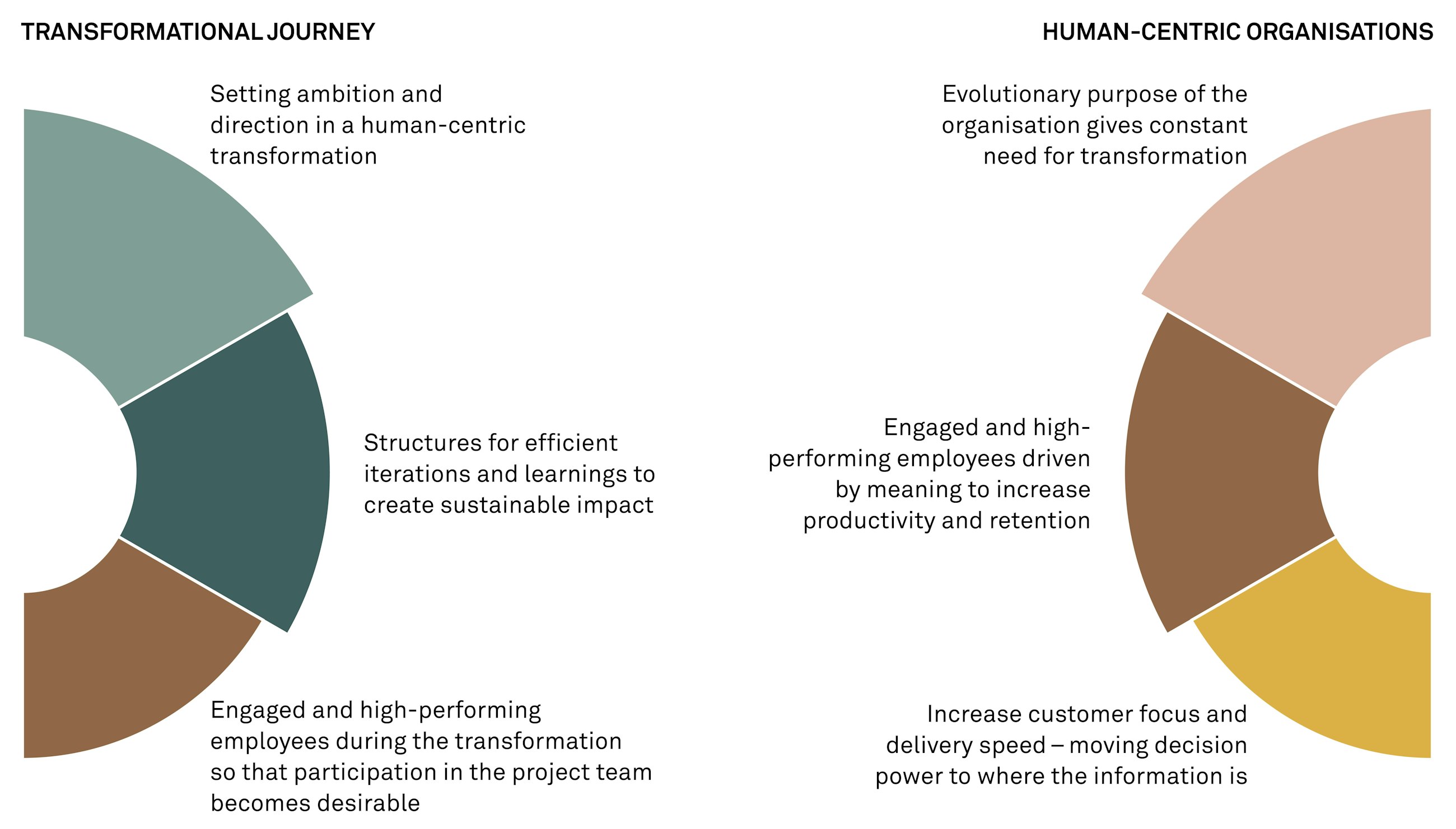Improving organisations by putting people first
12 August 2021
Start maximizing the human contribution at your organisation
Most organisations have already seen tech and start-up companies succeed with a new, more human-centric company structure. Here, we will introduce you to a framework, which brings the principles within human-centric transformations closer to all organisations, and not just organisations which fit on size and area of expertise.
In implement we are continuously curious within this area and will keep addressing the topic of human-centric transformations.
Inspirational framework for succeeding in becoming a human-centric organisation
The framework gives you a set of important levers to successfully transform your organisation to maximize human contribution. Human-centric transformations is a new way of transforming organisations characterised by innovation and an engaging workplace which significantly outperforms competitors in regards to employee satisfaction, efficiency, and customer delivery.
The framework will help you understand human-centric transformations and focuses on two states:
- The transformation journey: Understand how, and within which areas to increase focus, in order to be more human-centric in transformations
- Human centric organisation: Organisational characteristics focusing on enabling humans, purpose, and ultimately increase value for customers
Check out the transformation framework
Get more details on characteristics and levers to succeed with becoming a human-centric organisation.
Download the frameworkCase example
Spitex Zurich Limmat
Spitex Zurich Limmat employs more than 1'000 people at 10 locations. In a transformation lasting several years, the organisation has reduced management functions by 90 percent while simultaneously multiplying leadership and entrepreneurship.
Key benefits:
- Lower costs by eliminating decentralized management and through high autonomy in work organisation support functions. This can avoid up to 10-15 percent of organisation-wide costs.
- Better patient experience through better access to case leaders and greater continuity in the care team.
- Better employee experience. Many applications in a difficult job market.





